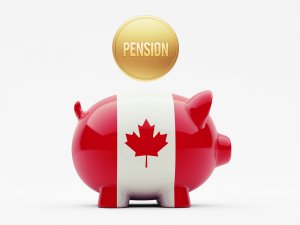
Not even the best accountant can predict the future. What we can do, however, is to keep you informed of important changes coming your way. One of the most significant changes for 2019, one that will affect most Canadian employees, employers and the self-employed, is aimed at securing a financially stronger future for Canadians during their retirement: The Canada Pension Plan (CPP) will undergo significant enhancements.
The CPP enhancements, originally announced in 2016, come into effect beginning in 2019 and will be phased in over a 7 year period. These enhancements aim to address the risk of a projected retirement income shortfall for many Canadians by providing higher benefits, which will be funded through higher contributions. The higher benefits will come in the form of an increase to the maximum annual pension benefit as well as a new upper limit on pensionable earnings. The higher contributions will come in the form of a phased-in increase in contribution rates as well as a new, additional contribution rate on the increased upper limit portion.
EXISTING PLAN
The CPP is a contributory pension public pension plan that provides a basic level of earnings replacement in retirement for workers in Canada (except in Quebec, which has its own Quebec Pension Plan). The CPP is financed by employer, employee, and self-employed contributions, as well as income earned on CPP investments. Currently, employees and employers each pay 4.95% of salaries annually into the CPP, up to a yearly maximum pensionable earnings (YMPE) level of $55,900. Self-employed individuals pay a commensurate 9% of salaries (representing both the employee and employer share of CPP). When employees retire at the age of 65, the CPP retirement benefit replaces a maximum of 25% of earnings up to the YMPE. This represents a maximum annual pension of $13,610 under the existing program. Employees earning more than the YMPE do not contribute to CPP above that level, and do not earn any additional pension benefit.
ENHANCED PLAN
Building on the existing plan, the changes will add further enhancements to this plan. These enhancements serve to increase the pension  benefits that workers will receive from the CPP. The enhancements will increase retirement, disability, and survivor’s pension benefits. The enhancements will be funded by increased contributions.
benefits that workers will receive from the CPP. The enhancements will increase retirement, disability, and survivor’s pension benefits. The enhancements will be funded by increased contributions.
Enhanced Benefits
The new legislation introduces the following two significant enhancements to the current CPP:
- The target payout rate for income replacement increases from 25% to 33% of eligible earnings. That is, the CPP retirement benefit will replace a maximum of 33% of earnings up to the YMPE. This represents a maximum annual pension of $17,500 under the new program.
- The maximum amount of income covered by the CPP will increase from $55,900 to about $82,700 when the program is fully phased in by 2025. This means higher-income workers will be eligible to earn CPP benefits on a larger portion of their income. For a worker at the $82,700 income level, CPP benefits will rise to a maximum of about $19,900 a year.
As a result of the above enhancements, pension amounts will increase by more than 33%. Pension will increase based on how much and for how long a person contributes to the enhanced CPP. A person will get the full increase if s/he contributes to the enhanced CPP for 40 years.
Increased Contributions
These enhanced benefits will be funded in the form of two additional contributions, to be rolled out in two phases:
Phase 1: 2019-2023 – The First Additional Amount
The contribution to CPP from employees and employers will each increase by one percentage point to 5.95% of YMPE, phased in slowly between 2019 and 2025 (see table 1 below). This is known as the ‘first additional amount’. Self-employed will pay both the employee and employer additional contributions.
Table 1: CPP Enhancement Contribution Rate Phase-In
|
Year |
Cumulative Increase | Base Rate |
Total Rate |
|
2019 |
0.15% | +4.95% |
5.10% |
|
2020 |
0.30% | +4.95% |
5.25% |
|
2021 |
0.50% | +4.95% | 5.45% |
| 2022 | 0.75% | +4.95% |
5.70% |
| 2023 | 1.00% | +4.95% |
5.95% |
Folding in projected estimated earnings ceilings, these new rates will result in the following estimated maximum yearly contributions.
Table 2: CPP Enhancement Contribution Amounts Increase
|
|
|||||
|
Year |
Contribution rate split (employee/ employer) | Contribution rate (self-employed) | Estimated earnings ceiling | Estimated maximum yearly contribution (employee/employer) |
Estimated maximum yearly contribution (Self-Employed) |
|
2018 (Before enhancement) |
4.95% | 9.9% | $55,900 | $2,594 | $5,188 |
| 2019 (Enhancement starts) | 5.10% | 10.2% | $57,400 | $2,749 |
$5,498 |
|
2020 |
5.25% | 10.5% | $60,100 | $2,972 | $5,944 |
| 2021 | 5.45% | 10.9% | $61,900 | $3,183 |
$6,366 |
|
2022 |
5.70% | 11.4% | $63,700 | $3,432 | $6,864 |
| 2023 | 5.95% | 11.9% | $65,700 | $3,701 |
$7,402 |
Note: The basic annual exemption is $3,500. The self-employed rate is 2x the employee rate.
Phase 2: 2024-2025 – The Second Additional Amount
Beginning in 2024, an additional, higher upper limit on pensionable earnings will be introduced. This new limit, known as the year’s additional maximum pensionable earnings (YAMPE), will not replace the first earnings ceiling (YMPE above). Instead, it will subject earnings to two earnings limits. The YAMPE will be phased-in over two years. In 2024, the YAMPE will be calculated as 107% x the YMPE. In 2025, the YAMPE will be calculated as 114% x the YMPE. Like the YMPE, the YAMPE will increase each year to reflect wage growth.
The portion of earnings between the YMPE and the YAMPE will have a different contribution rate. The second contribution amount will be 4% of the difference between the YAMPE and the YMPE. Self-employed will pay 8%.
Withholding, Filing and Taxes
The mechanics of withholding and filing the enhanced CPP will be the same as the existing CPP. The T4 slip will remain the same. The enhanced portion of CPP contributions will be included at the end of the year in the existing CPP boxes. Employers will continue to withhold enhanced CPP contributions from their employees’ remuneration and pay their share of these contributions as they currently do for existing CPP contributions. Self-employed persons will pay both the employer and employee share of the enhanced CPP contributions as they currently do for existing CPP contributions.
Tax treatment of the existing CPP contributions will remain unchanged. Tax treatment of the enhanced CPP contributions (both the first and second additional amounts) will change for self-employed persons and employees. Self-employed persons will be able to deduct both the employee and employer share of contributions to the enhanced portion of the CPP. Employees will be entitled to a tax deduction when filing their T1 personal income tax and benefit return for the enhanced portion of CPP contributions, while maintaining their non-refundable tax credit for existing CPP contributions. Employer contributions to the enhanced CPP contributions will be tax deductible, as are existing employer CPP contributions.
NEXT STEPS
Employers should take steps to ensure they are ready for these changes. These steps can include analyzing costing and pricing models to evaluate the impact on financial performance in order to make informed business decisions going forward. Consideration should be made of whether changes need to be made to payroll costs or whether amendments to company pension and benefit plans may be required. As well, care should be taken to ensure payroll systems are updated to reflect the changes to rates and limits. Employers may also wish to educate their employees about the upcoming changes.

This newsletter has been written in general terms to provide broad guidance only. It should not be relied upon to cover specific situations and you should not act upon the information contained herein without obtaining specific professional advice. Please contact our office to discuss this information in the context of your specific circumstances. We accept no responsibility for any loss or damage resulting from your reliance on the information in this newsletter.
